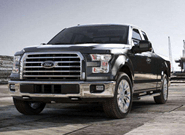Steel Markets

U.S. Auto Sales Disappoint in Q3, EV Demand a Bright Spot
Written by David Schollaert
May 4, 2021
U.S. automotive sales saw their lowest third-quarter performance in a decade, a 13.4% decline in new vehicle sales, due primarily to low inventory and high prices. In September, new-vehicle inventory was down nearly 60% from 2020, and sales suffered accordingly, said Cox Automotive.
New-vehicle sales totaled 3.395 million in the third quarter, the slowest third quarter in a decade – and September was notably off.
There have been only three times since 2011 when total monthly sales fell below one million units. September 2021 barely made it over that bar, according to the Kelley Blue Book (KBB).
KBB is owned by Cox Automotive.
Despite the overall bearish results, sales of electrified vehicles (EVs) jumped by nearly 60% over the same period. More than a million EVs have been sold so far in 2021, an increase of more than 44% year on year. EV share is nearing 3% of the total market. And in Q3 the combined total of EVs, hybrids and plug-in hybrids accounted for 10.4% of total vehicle sales, according to KBB. The outcome, an all-time high, was nearly double the results seen in the same period a year ago, when EVs accounted for only 5.5% of total sales.
The growth of U.S. EV sales is a result of more product availability and wider consumer acceptance, driven for the most part by two companies: Tesla and Toyota. But new players, including the Ford Mustang Mach-E and VW ID.4, are enjoying early success, said Cox Automotive.
In total, Tesla’s share of the EV market in Q3 jumped back above 70% after falling to 64% in Q2. The Tesla Model Y is the industry’s best-selling EV, accounting for nearly 40% of total EV sales. Toyota, however, has long dominated the market when it comes to hybrid powertrains, as more than 24% of combined Toyota and Lexus sales have been hybrid vehicles. More than 60% of all hybrid-electric vehicles sold industrywide in the third quarter came from Toyota, according to KBB.
Tight inventory and high prices will continue to be the central story for new-vehicle market segment in the fourth quarter. Electrified vehicle growth, however, will likely remain a bright spot. In the third quarter, one in ten vehicles sold came equipped with a significant battery pack.
“We are indeed now firmly in an electrified decade when battery technology will play a key role in the industry’s development and, ultimately, consumer satisfaction,” said KBB.
By David Schollaert, David@SteelMarketUpdate.com

David Schollaert
Read more from David SchollaertLatest in Steel Markets

CMC looks beyond Arizona micro-mill woes to long-term viability of construction mart
Despite the economic and geopolitical upheaval of the last five years, CMC President and CEO Peter Matt points out that the construction market has been an essential element of the way forward.

US importers face stricter rules under revamped S232 tariffs
“CBP expects full compliance from the trade community for accurate reporting and payment of the additional duties. CBP will take enforcement action on non-compliance," the agency said in a March 7 bulletin.

Steel exports rebound in January
US steel exports recovered to a five-month high in January after having fallen to a two-year low in December. This growth follows four consecutive months of declining exports.

Construction spending drops marginally in January
Construction spending edged down slightly in January, slipping for the first time in four months. The US Census Bureau estimated spending at a seasonally adjusted annual rate of $2,196 billion in January, down 0.2% from December’s downward revised rate. The January figure is 3.3% higher than a year ago. January’s result, despite the slight erosion, […]

HVAC equipment shipments slow in December but strong annually
Shipments of heating and cooling equipment in the US fell to an 11-month low in December, according to the latest data released by the Air-Conditioning, Heating, and Refrigeration Institute (AHRI).
